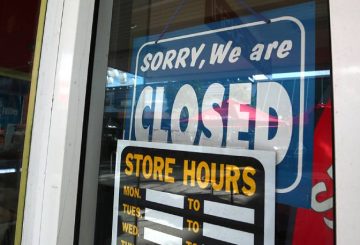뉴질랜드 상무부 및 소비자부 장관 앤드류 베일리는 세린 인더스트리 주식회사에 강제 리콜 통지를 발표했습니다. 회사는 2018년 6월 16일 이후 수입, 판매 또는 설치된 모든 세린 S2068 욕실 히터를 리콜해야 합니다.
이 조치는 해당 난방기의 다른 공급업체들이 자발적으로 리콜한 데 따른 것입니다.리콜은 WorkSafe 조사에서 과열 위험을 포함하여 히터에 대한 안전 문제가 발견된 후 시작되었습니다.
MBIE (비즈니스 혁신 고용부) 는 이러한 히터의 알려진 모든 공급업체에 연락했습니다.Serene Industries Ltd를 제외한 모든 업체가 S2068 히터의 자발적 리콜을 시작했습니다. 이 회사는 자발적 리콜을 발표하지 않았으며 더 이상 뉴질랜드에서 사업을 운영하지 않습니다.
회사가 안전하지 않은 제품을 판매한 후 자발적 리콜을 시작하지 않은 경우 강제 리콜 명령이 내려집니다.이 명령은 이러한 히터를 구매하거나 판매한 모든 사람이 리콜 사실을 알 수 있도록 하기 위한 것입니다.
3월에는 엄선된 S2068 욕실 히터 시리즈가 리콜되었습니다.이후 리콜 대상은 2018년 6월 16일 이후 수입, 판매 또는 설치된 모든 S2068 욕실 히터를 포함하도록 확대되었습니다.
일부 S2069 및 S207T 모델에 대해서도 추가 자발적 리콜이 실시되었으며, WorkSafe는 4월에 판매를 금지했습니다.
MBIE 비즈니스 전문가인 Ian Caplin은 뉴질랜드의 공급업체와 소매업체는 소비자에게 안전한 제품을 제공할 책임이 있다고 설명했습니다.제품에 결함이 있는 것으로 확인되면 해결책을 제시해야 합니다.
2024년 5월 10일 현재, 뉴질랜드의 19개 공급업체 (세린 인더스트리 제외) 가 2018년 6월 16일 이후 S2068 히터를 판매한 것으로 확인되었습니다.하지만 아직 확인되지 않은 공급업체가 더 있을 수 있습니다.
19개 공급업체 모두 총 약 35,000대의 S2068 장치에 대해 자발적 제품 리콜을 실시했습니다.
S2068 히터를 사용하는 소비자는 사용을 중단하고 플러그를 뽑은 다음 구입한 회사에 문의하는 것이 좋습니다.소비자는 먼저 S2068 모델을 구입한 업체에 연락하여 소비자 보장법 (CGA) 에 따라 제품을 반품하고 안전한 교체 또는 환불을 받아야 합니다.
S2069 및 S207T 히터의 경우 Energy Safety에서는 사용을 금지한 것이 아니라 판매를 금지했습니다.그러나 뉴질랜드 사람들은 여전히 히터를 판매한 소매점에 연락하여 CGA에 따른 옵션에 대해 논의할 수 있습니다.
자발적 리콜에 대한 추가 정보 및 공급업체 정보는 제품 안전 웹 사이트에서 확인할 수 있습니다.





























































